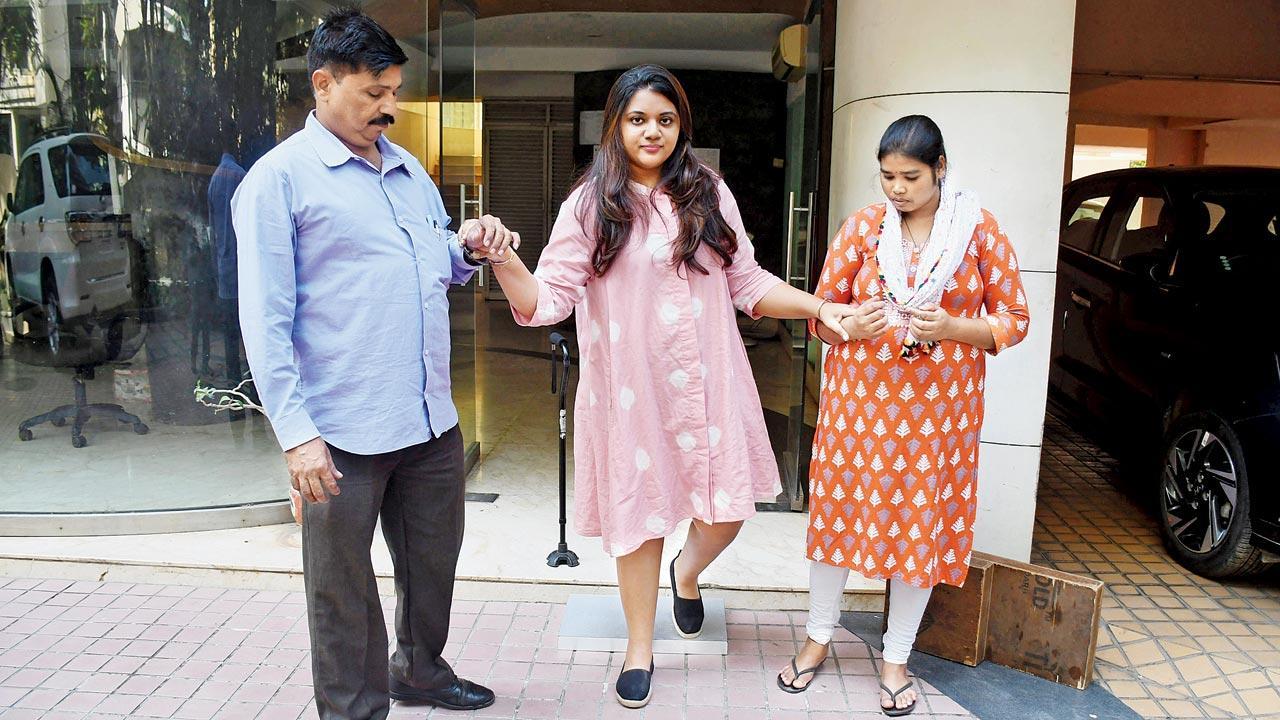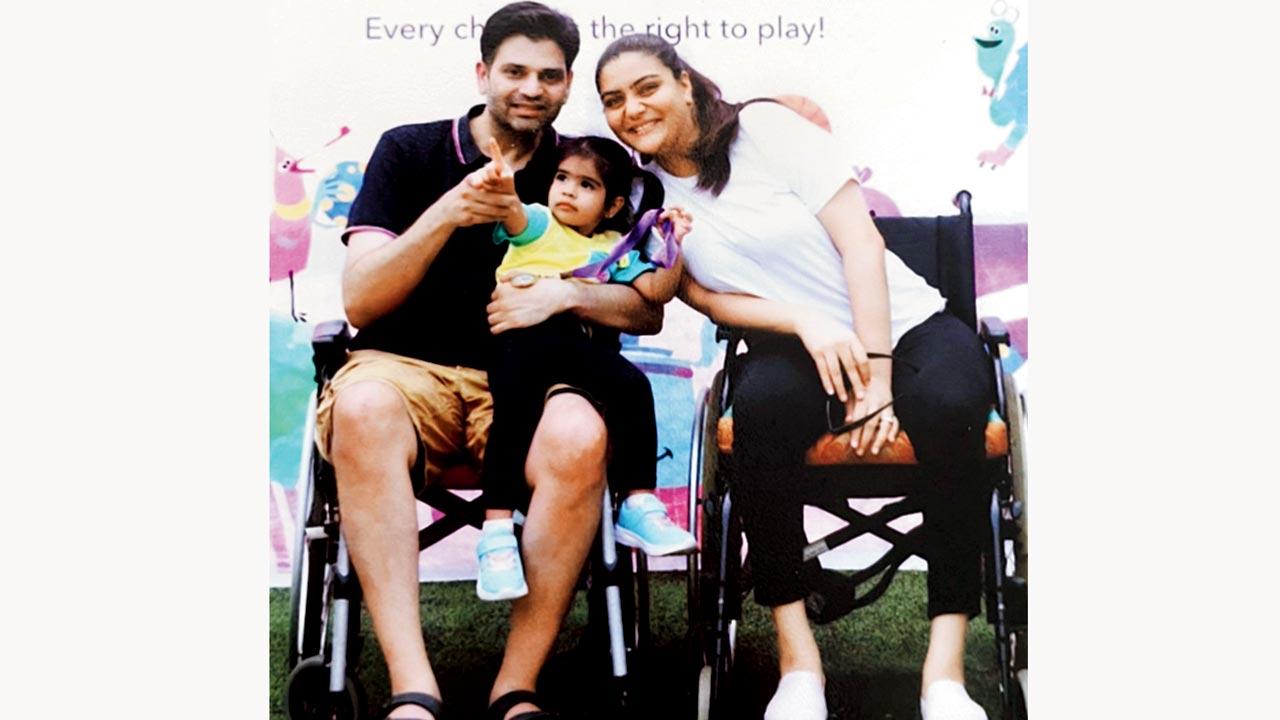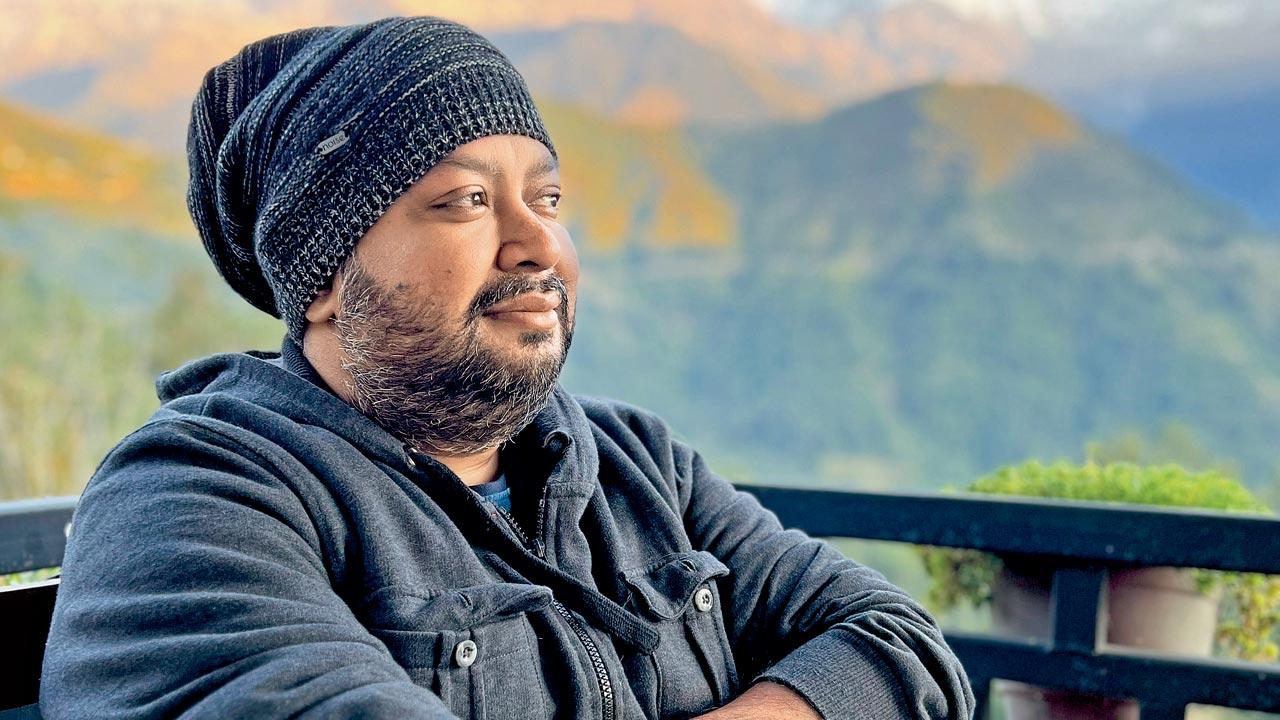What’s it like to watch your muscles waste away? Muscular dystrophy heroes refuse to give in an inch to the incurable and progressive disease with prohibitively expensive treatment

Media professional and MD activist Sonali Gupta moved from America to make a life in Bandra because India offers cheap and reliable care and support. Her 24-hour live-in companion Martha Tirki and driver and Man Friday Srikrishna ‘Balu’ Lugade help her negotiate tricky areas using local carpenter customised steps. Pic/Ashish Raje
Mithila Beheray cannot comfort her three-year-old daughter, when she falls. “I have never picked her up,” says the 35-year-old Nagpur resident.
ADVERTISEMENT
That’s been the hardest part. Not needing assistance to climb the stairs when she was at dentistry college at 16, being the last one to get to class, and the last one out. Not progressing from having a peculiar gait, to finding it hard to stand up from a squatting or sitting position, to progressing to a walker and a wheelchair. Not taking two years to learn to re-tie her hair.
Muscular dystrophy is a moving target. “While I work on re-adapting one muscle group to do a functional task differently,” says Beheray, “something else starts failing. My disease progressed very slowly until after my delivery, three years ago. Then COVID-19 happened and I could not find a physiotherapist to come home. Now I have to use my muscles strategically, I can’t over-tire them. That’s why I use a wheelchair.”
 Mithila Beheray was diagnosed with the Limb-girdle type 2B Muscular Dystrophy at 16, but it progressed rapidly after the birth of her three-year-old daughter Tara
Mithila Beheray was diagnosed with the Limb-girdle type 2B Muscular Dystrophy at 16, but it progressed rapidly after the birth of her three-year-old daughter Tara
Muscular dystrophy is a progressive genetic disorder with no cure and leads to the gradual weakness and loss of muscle mass. There are no supplementary therapies, nothing to prevent, reverse or repair it. “Under the broader category fall 35 sub-types,” says Dr Arun Shastry, Chief Scientific Officer at DART (Dystrophy Annihilation Research Trust). “These are named mostly by the organs they affect. The most deadly is Duchenne Muscular Dystrophy or DMD. It largely affects only boys, usually at the age of two years; by the time they are seven to nine, the skeletal muscle is hit and they are wheelchair bound. By their early 20s, they pass away due to respiratory or cardiac arrest.”
There’s a reason for the directness and urgency of the scientist’s message: Most funding for research into the disease comes from parent groups. Just like DART, which was established 10 years ago in Bengaluru by Ravdeep Singh Anand and Movin Anand, whose son Karamveer was diagnosed with DMD in 2004. While stem cell therapy has been explored, it’s not with much success. “Cells are made of DNA,” explains Shastry, “If the basic software has a bug, not much can be done.” A ray of hope though, is gene therapy in which the gene is repaired or edited. This is in the trial stage, like the Antisense Oligonucleotides based Exon Skipping therapy that DART hopes to start trials for in its nine centres. It focuses on gene repair by correcting the mutation using their novel drug.
Currently, the therapy is available to patients only in the US at a hefty R5 crore per annum per child; if all goes as per DART’s plan, it could cost Rs 25 lakh a year, in India. That is, if trials are initiated and completed. The infrastructure of which will need R13.5 crore for 18 months of trials involving 54 patients.
 Dr Arun Shastry, Chief Scientific Officer, Dystrophy Annihilation Research Trust (DART)
Dr Arun Shastry, Chief Scientific Officer, Dystrophy Annihilation Research Trust (DART)
“Over the past 10 years,” says Shastri, “Parents of Indian children with MD have contributed to research and develop medical advancements. For the current project, we have received some grants from the government, raised some through crowd sourcing and need around R10.7 crore more.”
“May God spare even the enemy’s children from this disease. I am not able to save my children, I don’t want to live anymore,” read Sanjeev Mishra’s suicide note as reported by a national daily on January 28, 2023. The former BJP corporator’s two sons—aged seven and 13—suffered from Duchenne MD. The whole family, including Mishra’s wife, died by suicide.
Beheray suffers from the Limb-girdle type 2B strain (LGMD2B), and was diagnosed in 2006, when she was 16. Her daughter, Tara, is a carrier. “I had a peculiar waddling gait, which my mother noticed,” she says. Beheray was sent to see neurologist Dr Satish Khadilkar, with whom she keeps in touch till date.
“It was hard for me to accept it; especially when my friends were doing all the things teenagers do,” she says. “My mother pushed me to do physiotherapy every day; she wouldn’t let me wallow in self-pity or depression.” A spinal injury put Beheray’s husband, Aditya, also in a wheelchair. When she found herself getting angry for no reason, after the birth of her child, Beheray took herself to the therapist’s couch. “I was ridden with guilt,” she says. “My husband and I wondered if we had done the right thing by bringing a child into the world. Whether we are able to do justice to her.” The therapist assured her that this was all in her head: “He told me I would do more for her,” she says. “And Tara is an amazingly sensitive child. Her nanny helps me dress, and if she’s not around, Tara has asked me whether she can help me lift my legs. She’ll ask me, ‘Mumma are you happy?; Mumma are you sad?’ You don’t expect this kind of sensitivity from a toddler.”
Beheray now focuses on staying as independent for as long as she can. She focuses on using her muscles wisely, and functionally. “I can’t wear them out since they don’t regenerate,” she says. “I focus on tasks like being able to put on my make-up or doing my buttons and hooks. I lost a lot of upper body strength after Tara was born.”
Sonali Gupta moved to India for the support her homes in New Jersey and New York could not give her. The daughter of physicians, with roots in Faridabad and Rishikesh, the US-born Indian chooses to live in Bandra to be able to get and afford the help of her 24-hour live-in companion Martha Tirki, her driver and Man Friday Srikrishna ‘Balu’ Lugade; and even simple conveniences such as the readiness and ease of carpenters who will make a portable two-inch step designed by her which she can use to break down the six-inch steps most commercial establishments have, making restaurants and bars more accessible to her. The journalism student dedicated her words and voice to activism around MD, writing about it and making podcasts.
The now 36-year-old was diagnosed in 2007-08 when she was an under-grad in her senior year, and came to India with her father to explore supplementary therapies such as Ayurveda and stem cell therapy. “We found that both my parents have the unexpressed gene,” says the now Bandra “local”. She also has the limb-girdle strain that leads to degeneration of the hip and pelvic girdle. “I had started falling down easily, which I just put down to clumsiness,” she says of the symptoms that lead to the diagnosis. “I had trouble climbing the stairs at the subway, and noticed that I couldn’t raise my arms over my head. I was about 20-21 then, but looking back, I had started compensating [for muscular weakness] two to three years prior [unknowingly].”
While she could, Gupta pursued an active life interning with a record label, then enrolling to study entertainment law so that she could continue in the music industry. Parallely, Gupta and the family explored Ayurveda for a year in 2008 in Pune, stem cell therapy in Chembur in 2011-12 and living in Florida for 10 months in 2015. “Though Florida, due to its senior citizen population, had more accessible infrastructure, it was very isolating,” she says. “Care-givers in New Jersey are hard to find, and expensive. I had come to Mumbai before and the vibe felt like home. So I moved here in 2016.”
Since then, Gupta has been stoically ambulatory. She does adaptive yoga, swimming and pilates. She’s part of many communities—personal and professional—and she does not refuse an invitation to be social unless it compromises er health. “I rely on a cane, and carry my portable step,” she says, "Balu has been with me since 2011,” says Gupta, “He understands how my body moves and I'm lucky to have both his and Martha's support to go wherever I desire. Mumbai needs to create more accessible spaces. I used to be okay with getting carried up in a chair but now I find that process dehumanizing and humiliating." She serves as assistant producer in a podcast company, hangs at Soho House Juhu, and hopes to rejoin singing and keyboard classes.
Gupta has elevated the height of her bed, dining chair and sofa, just as Beheray has (including the WC) to be able to rise easily. “Just this convenience,” she says, “of being able to get a carpenter to customise or alter things around the home readily and economically makes India easier to live in.”
 Subscribe today by clicking the link and stay updated with the latest news!" Click here!
Subscribe today by clicking the link and stay updated with the latest news!" Click here!







